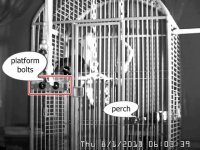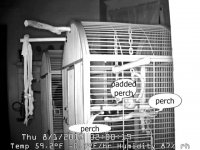OP
pomonabill221
New member
- Jun 5, 2013
- 115
- 0
- Parrots
- White Front Amazon (Toots),
Yellow Naped Amazon (Luiji) and
RIP... African Grey Timneh (Al)
- Thread Starter
- Thread starter
- #81
Quality is plenty good, Bill.I'll be watching...
THANK YOU for setting this up.
NO...thank YOU for taking an interest! I really appreciate everyone's help!
To switch cameras, click in the left box where the cameras are listed and the camera will fill the view box.
You can zoom in by using the scroll wheel on you mouse (quality will suffer though so use zoom sparingly).
To pan the zoomed view, just drag in the video.
To zoom out, just scroll the other way in the video window.

